More cash, better machines: your guide to the new tax law
Key highlights
- You can now deduct domestic R&D expenses immediately in the year they are incurred, which helps cash flow for new innovations.
- The new law permanently restores 100% bonus depreciation for new machinery and equipment purchased after January 19, 2025, allowing you to write off the full cost right away.
- For new facilities, you may be able to fully expense the construction costs in the first year instead of depreciating them over decades, provided the building is used for production and meets specific construction timelines.
In July, U.S. manufacturers got a major boost from Washington, D.C. The One Big Beautiful Bill (OBBB) Act extended key provisions of the 2017 Tax Cuts and Jobs Act (TCJA) and introduced a new wave of targeted tax relief.
For manufacturers, the OBBB corrects some of the TCJA’s unintended consequences, such as the required amortization of research and development (R&D) costs, and adds powerful new incentives, including full expensing for new manufacturing facilities. These changes could significantly affect how companies plan, invest and structure their domestic operations in the years ahead.
Here’s a closer look at the most significant changes and what they mean for U.S. manufacturers:
1. R&D expenses can be deducted immediately
One of the biggest changes for manufacturers is the restoration of full expensing for domestic R&D costs.
Under the TCJA, manufacturers had to spread their R&D deductions over several years—five years for U.S.-based research and 15 for work conducted abroad. This created cash flow strain for companies investing heavily in innovation, especially in capital-intensive industries like advanced manufacturing, electronics and automotive.
The OBBB fixes the problem. Starting with tax years beginning after December 31, 2024, domestic R&D expenses can once again be deducted in the year they’re incurred. Foreign research expenses still need to be amortized over 15 years.
For smaller manufacturers—those with average annual gross receipts of $31 million or less—the change is even more valuable. They can apply this deduction retroactively to 2022-2024 by filing amended returns. All manufacturers can elect to accelerate their unamortized R&D costs over one or two years, creating a near-term cash flow boost.
2. Manufacturers can fully expense new equipment
Investing in new machinery and production equipment got more attractive under the OBBB. The law permanently restores 100% bonus depreciation for qualified assets acquired and placed in service after January 19, 2025.
Previously, under the TCJA, bonus depreciation had started phasing out, dropping 20% each year beginning in 2023, which made it harder for manufacturers to recover the upfront costs of capital investments.
In tax year 2025, companies can claim 40% bonus depreciation for assets placed in service during the first 19 days of the year and then full 100% bonus depreciation for the rest of the year. This allows manufacturers to immediately write off the cost of qualifying machinery, tools and production equipment, rather than depreciating them over several years.
The OBBB also enhances Section 179 expensing:
- The maximum deduction jumps from $1 million to $2.5 million.
- The phaseout threshold now begins at $4 million.
- Both limits will be indexed for inflation starting in 2025.
For capital-intensive manufacturers, these changes could free up cash faster and make it easier to reinvest in technology, expand production lines or manage debt.
3. New facilities qualify for full first-year expensing
Traditionally, commercial and industrial buildings must be depreciated over 39 years, meaning it takes decades for manufacturers to recover the full cost of expansion costs for tax purposes.
Under the OBBB, qualified production property (QPP) qualifies for 100% first-year depreciation if:
- construction begins after January 19, 2025, and before January 1, 2029
- the property is placed in service in the United States between July 4, 2025, and January 1, 2031
- the space is used for manufacturing, production or refining activities that substantially transform raw materials into finished products.
Office space, administrative areas, parking, sales floors and engineering spaces do not qualify for this immediate deduction and must follow standard depreciation rules.
For manufacturers planning to expand or modernize facilities, this incentive can dramatically reduce after-tax costs and accelerate ROI. Instead of waiting decades to realize tax benefits, companies can free up capital in Year One.
4. Businesses can deduct more interest costs
Since the TCJA, manufacturers have faced strict limits on how much business interest they could deduct, generally capped at 30% of adjusted taxable income, calculated as earnings before interest and taxes (EBIT). The limited deduction hit capital-intensive manufacturers hardest, especially those that rely on loans to finance new equipment, facilities or acquisitions.
The OBBB eases this burden starting in tax years beginning after December 31, 2024. It redefines adjusted taxable income to exclude depreciation and amortization, effectively moving from EBIT to EBITDA. This change allows companies to deduct more interest expense, which improves cash flow and reduces their after-tax borrowing costs.
Small businesses—those with average annual gross receipts under $31 million—remain fully exempt from the interest deduction limits.
For manufacturers expanding production lines or building new facilities, the financing costs can be significant. The switch to EBITDA means larger manufacturers can deduct more of their interest costs, easing the financial pressure of growth investments.
5. Flow-through entities gain long-term tax relief
Many U.S. manufacturers operate as flow-through entities—S corporations, partnerships or limited liability companies (LLCs)—where business income passes through to the owners’ personal tax returns. The OBBB includes several provisions that deliver long-term relief and planning opportunities for these businesses, including some key changes for flow-through manufacturers.
- Permanent lower tax rates for individuals: The OBBB locks in the existing 10%, 12%, 22%, 24%, 32%, 35% and 37% brackets, providing owners of flow-through entities with more certainty about their top marginal tax rates.
- Permanent 20% qualified business income (QBI) deduction. Flow-through manufacturers can continue to deduct up to 20% of their QBI, effectively reducing the top marginal tax rate on U.S. manufacturing income to 29.6%.
- Higher standard deductions and permanent alternative minimum tax (AMT) relief. The law permanently increases the standard deduction, repeals personal exemptions and expands the AMT exemption amounts, indexing them for inflation.
- Temporary increase in state and local tax (SALT) deduction cap. For 2025, the SALT deduction cap rises to $40,000, phasing out for taxpayers with modified adjusted gross income over $500,000. The cap will increase 1% annually through 2029 and then revert to $10,000 in tax year 2030.
These provisions offer long-term stability and planning opportunities for family-owned and privately held companies. Owners can plan with more confidence, maximize their QBI deduction and potentially capture short-term SALT savings before the cap decreases again in 2030.
Get your subscription to Control Design’s daily newsletter.
6. Estate and gift tax exemptions are higher
Succession planning became more flexible under the OBBB. It permanently increases the estate and lifetime gift exemptions to $15 million for single filers and $30 million for joint filers.
Both figures are indexed for inflation. The change goes into effect in tax year 2026, providing owners with a clearer and more generous framework for transferring business interests to the next generation.
Manufacturers that have been postponing succession plans due to uncertainty now have a unique window of opportunity to transfer ownership while minimizing estate tax liability. Families can move stock, real estate or other business assets into trusts or directly to heirs with less exposure to federal estate taxes.
Other OBBB provisions that affect manufacturing planning and operations
Beyond the headline provisions, the OBBB includes a series of secondary tax changes that can affect manufacturers’ planning and operations. For example:
- International tax adjustments are impacted by changes to foreign-derived intangible income, global intangible low-taxed income tax deductions and base erosion and anti-abuse tax rules.
- Stock acquired after July 4, 2025, may now qualify for larger capital gains exclusions, potentially benefiting startups and high-growth manufacturing firms.
- Employers must meet new reporting standards for employee overtime for workers to qualify for the related deduction.
- A permanent limitation on excess business losses codifies limits on how much flow-through losses can offset nonbusiness income, requiring closer tax planning for owners.
While these changes are more technical, they highlight the importance of coordinated tax planning, especially for manufacturers with international operations, high-growth equity plans or complex ownership structures.
How to take advantage of the OBBB now
The OBBB creates opportunities and complexity for manufacturers. Many of its benefits can deliver substantial cash flow advantages, but only if companies understand how the rules apply to them.
The first step is to evaluate which provisions affect your business, since eligibility often depends on company size, structure and prior filing positions. Next, companies should identify opportunities for immediate action, such as filing amended returns for prior R&D expenses or updating depreciation schedules to capture bonus depreciation.
Finally, keep the long-term tax strategy in view. Some OBBB provisions are permanent, while others have phaseouts or specific timelines. Early planning helps manufacturers maximize these changes and position themselves for growth.
About the Author
Mike Devereux
Wipfli
Mike Devereux is partner at Wipfli. He is a certified public accountant (CPA) and certified manufacturing professional (CMP). He is a member of the American Institute of Certified Public Accountants (AICPA), the Missouri Society of Certified Public Accountants (MOCPA) and the Associated Industries of Missouri. He is also a board member of the Manufacturers Association of Plastics Processors (MAPP), chairman of Allinial Global’s R&D Tax Credit Community of Practice, executive board member of the Manufacturing Services Association (MSA) and president of Manufacturing CPAs.
Devereux has identified millions of dollars in tax incentives for manufacturing clients, led hundreds of research and development (R&D) tax credit study engagements and demonstrated leadership and exceptional judgment in the tax structuring of various acquisitions. He speaks nationally to various professional and industry trade organizations and associations about opportunities to reduce federal and state tax liabilities and has written dozens of articles for trade publications. He has also presented at a wide variety of association events, colleges and universities for educational purposes. Topics for his sessions have included research and experimentation (R&E) tax credits, IC-DISC export incentives, tax incentives and manufacturers and entity selection tax planning.
Contact him at [email protected].

Leaders relevant to this article:

